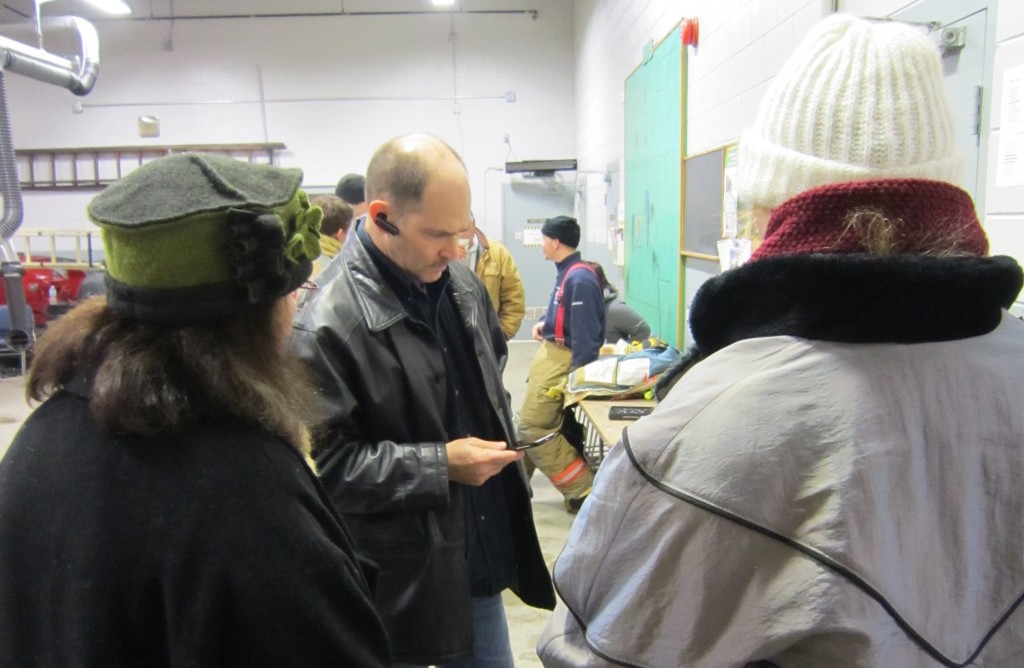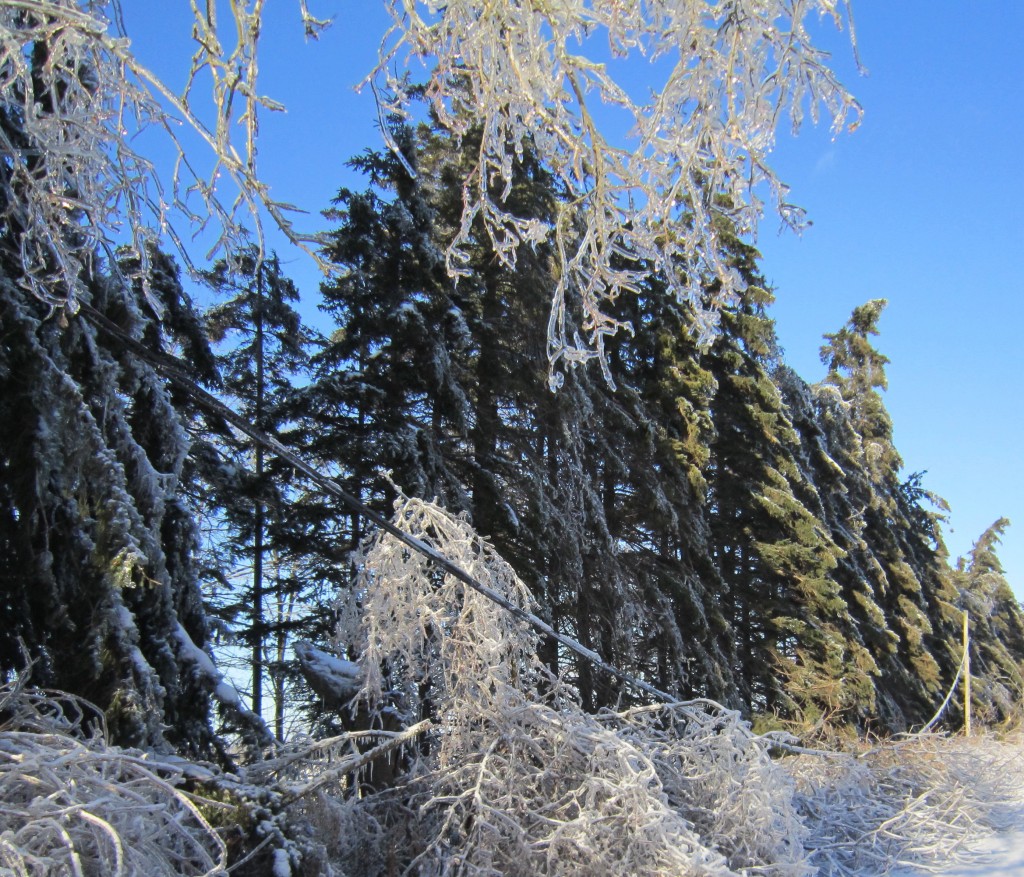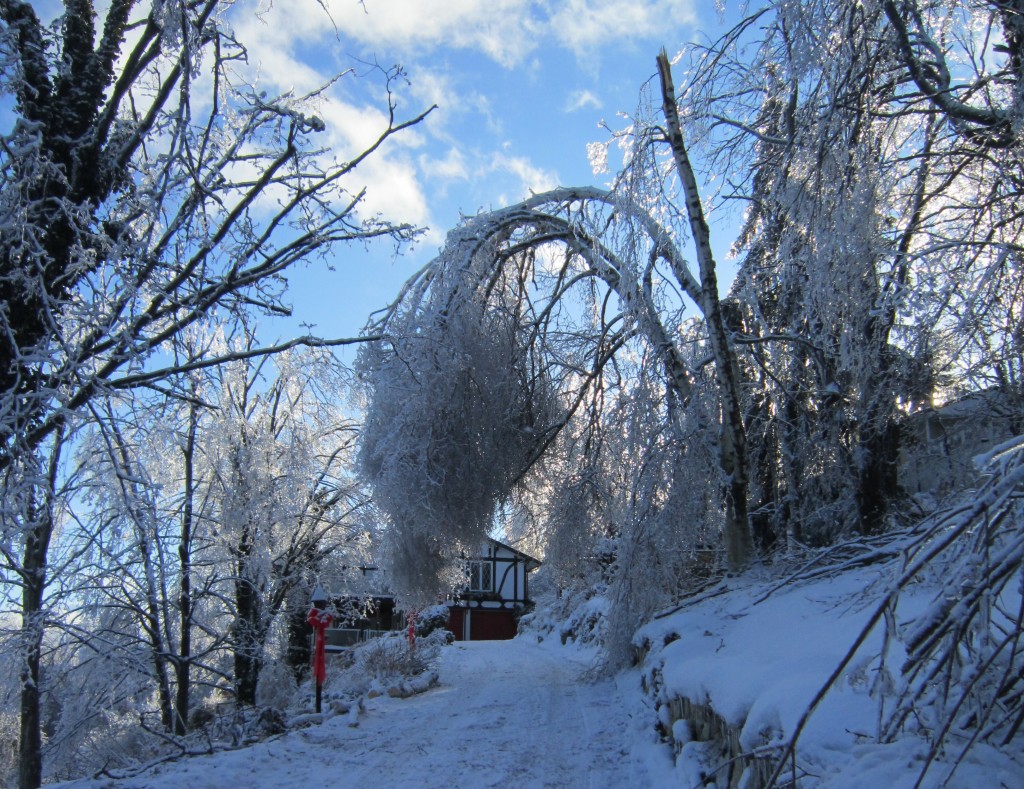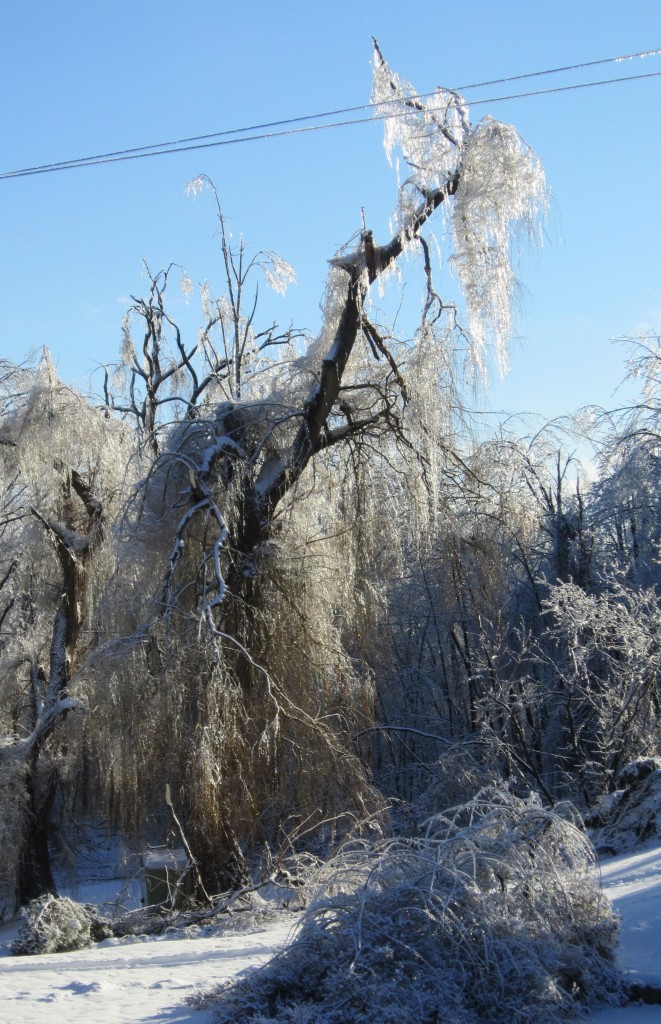BURLINGTON, ON.
January 17, 2014
And how did you get through the power outage? These events tend to recede from our memory unless the event was horrific or something close and personal happened.
For the people at Burlington Hydro (BH) it was very close and very personal. Most of the staff worked long hours on Christmas Day
Christine Hallas handles corporate communications for Hydro and like every corporation that deals with the public, Hydro decided they needed to begin tweeting. It was new information tool for BH and they are a cautious organization – they did their research and they did some testing and on the Thursday before the ice storm hit Christine advised the rest of the management team that they were good to go whenever the word was given.
At about the same time BH people were getting the word from different sources that we were in for a bit of tough weather. The people in the BH operations room listens to the radio like the rest of us but they also subscribe to a couple of weather information sources, which Dan Guatto, than in charge of engineering and operations for Burlington Hydro, admitted “weren’t all that good” but there was enough information for the senior management team to decide to open the tweet channel. In a matter of hours the rate went from 0 followers to more than 500 and BH hydro suddenly became an important source of information for the public.
And information was the one thing that the public didn’t have all that much of – and they wanted it. BH found they were getting pictures of trees down sent to them, the switchboard was overloaded – at one point they had logged 1500 calls and then the system crashed.

Dan Guatto, doing his best to communicate in an environment where there are a lot of things not working very well. His cell phone got him through most of the problems – Burlington Hydro is currently working on a wen site that will provide much more in the way of information for the public.
We live in a world” said Guatto where people Google the menu of the restaurant they are going to – there is the expectation that information is always available and available instantly.
It quickly became evident that while there were problems in the downtown core – it was the ice on the lines in the northern part of the city – on the inclines – where things were worst.

A line down and a cable split on road after road after road. Hydro used up 1000 metres of cable doing the repairs.
Ice on the lines left many of them sagging – the ice on the trees that was killing ever effort to get the lines operational.
Overall the grid, North American wide was working just fine –“ it was the really local stuff that crippled us. We would get two houses back on and then a house in between them would have branches come crashing down and we were right back where we started”, said Sm.
Trees were our biggest problem. People live in north Burlington because of the trees. People were prepared to be out of their homes for six days – but they were not prepared to have their tress cut down.
Burlington Hydro, like any responsible organization, plans and does practice scenarios. They will scope out what the worst possible consequences from a possible situation and then work out plans for how they will react, what equipment they will need and make sure they have it – close by
Gerry Smallegange, Hydro president, explained that “we would give people our best estimate which was often not much more than a guess, but it became close to gospel truth in the minds of many. When crews are out in the field it is like being on a construction site and we often just don’t know how long a task is going to take.
When the line going into Lowville went down explains Smallegange the crew going in to do the fix couldn’t get their trucks in far enough – so everything had to be hauled in by hand – over a distance of more than a kilometre. It took hours but they finally got it up and service was restored – which isn’t as simple as screwing in a new fuse and seeing the lights go on. There are significant safety precautions that had to be gone through – but the lights went on and the crews moved on to the next problem.
Within hours the line was back down and that work had to be done all over again. The new break had to be found, the power taken out of the line, a splice made to the wire, line tested and power restored.
Side road # 8 had to be totally re-built. It was the worst situation we faced said Smallegange who added that there are 20,000 poles in the hydro system but only 20 were broken during the storm. Millar Crescent was un-passable for a period of time and there were a number of situations that needed less than a quick glance to know that there was a problem just waiting to happen.
For people sitting in a cold house – there is little comfort in knowing that all these steps have to be taken. For the men in the field it was long hours in cold weather which isn’t easy to work in. Fatigue and working in bulky clothing and ground that was slick with ice are conditions that result in accidents – of which there were none for the hydro crews.
Hydro used up 1000 metres of cable to complete the repairs. They didn’t lose any generators and there was never a serious risk of running out of cable. All the hydro operations in the area have working agreements to purchase from each other. They also have consignment agreements from the supply manufacturers that keeps needed supplies in the hydro yard – masking it instantly available.

Trees can’t last with this amount of ice on the branches. A mighty oak bends to the force of nature. We would like look at this in the spring and see what survived.
The December outage was big and there was little in the way of the kind of warning the city got during the July problems.
What BH is beginning to struggle with is – how often are we likely to see situations like this – and that for much of the world is both a very pressing and a very vexing question. It all relates to risk analysis. It just isn’t possible to be fully geared up every hour of every day for something that might happen.
Christmas Day of 2013 was a fully geared up day for both Burlington Hydro and the city of Burlington. “It is the city manager Jeff Fielding who has point on this explained Smallegange – we get the job done but he calls the shots. There is a very solid working relationship between Hydro and the city – the city is the only shareholder but that’s not what makes the relationship work as smoothly as it does. The top people on both sides are consummate professionals and each knows what has to be done and they get it done.
The city got through the storm and while we will be picking up brush for a number of months and when the snow melts we will see twigs and scraps of wood that will have to be raked up and either burned in a fire-place or put out as waste.
Expect the Regional authority to revise the date for the last such pick-ups several times. That will be the least of our problems.
There were no fatalities, no really serious injuries. A major dent to Hydro’s financial statements but this is one you are not likely to feel. Burlington Hydro is currently in negotiations on the price of the hydro it buys; there will be a decrease in the price hydro pays for power as a result of these negotiations. How much of that price decrease works it way to your hydro bill is going to be impacted by the storm damage. The decrease you see will be just a little less than hydro had originally hoped to deliver to the public.
The cost of the outage in terms of additional monies for Burlington Hydro will come in at more than $1 million.
A lot of lessons were learned – the most important of which were on the communications side. With power out telephone service was down and cell service in the northern part of the city isn’t all that good at the best of times. There are parts of the city where there is basically no service.

Worn down but not worn out. Burlington Hydro Gerry Smallegange and his chief of engineering talk to people at the Kilbride fire station on what was up and what wasn’t yet up in terms of power lines.
Hydro is putting together a much different web site that will improve significantly on the information they can deliver – that along with their ability now to tweet at will result in better communications.
For Hydro’s senior management the biggest lesson was to fully understand what the public wanted in the way of information and then to find a way to get that information out with very necessary caveats and cautions attached to it.
You will like what hydro is going to release in the very near future. “Hopefully” adds Smallegange it will be up and running before the next catastrophe providing that doesn’t take place this month.”
The big wish for Hydro is a way to be able to trim those trees in such a way that the canopy is not lost but the hydro wires have a chance to stay up when the winds howl and the trees bend.
















